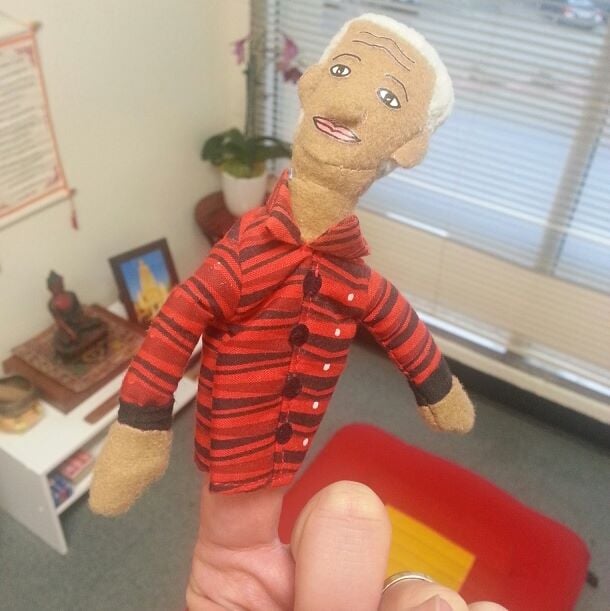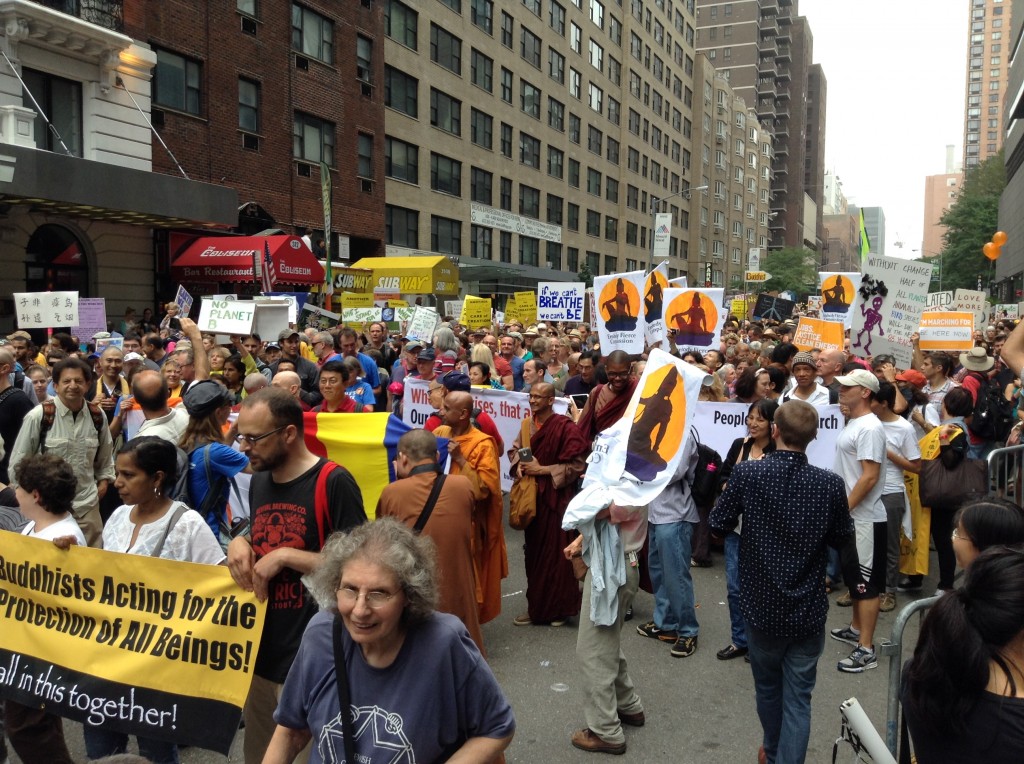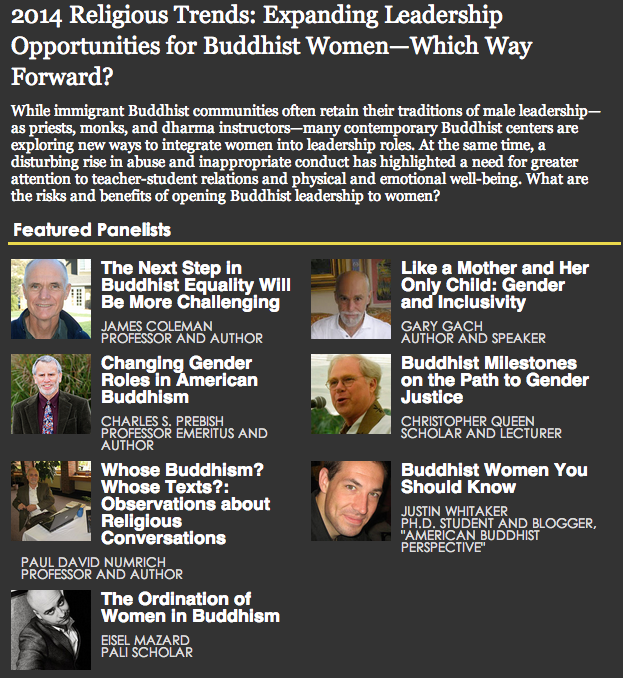“Overcoming poverty is not a task of charity, it is an act of justice. It is the protection of a fundamental human right, the right to dignity and a decent life. While poverty persists, there is no true freedom… Like slavery and apartheid, poverty is not natural. It is man-made and it can be overcome and eradicated by the actions of human beings. Sometimes it falls on a generation to be great. YOU can be that great generation. Let your greatness blossom.”
– Nelson Mandela (1918-2013)
When I heard the heartbreaking news last week that Nelson Mandela had passed away, the first of his many pieces of wisdom that flashed into my head was the above quote, and I’ve been sitting with it ever since. Then, barely a day after Madiba’s passing, Patheos approached me about participating in their latest Public Square roundtable on the question, “How can faith communities help alleviate poverty?” I agreed immediately to participate, recognizing it as the best possible way to honor at this blog a man who would probably find addressing this topic a more fitting tribute than yet another maudlin remembrance. (That said, Archbishop Desmond Tutu and Nicholas Kristof‘s reactions to Madiba’s death are essential, important pieces of reading, and I would be remiss not to mention them.)
This latest Patheos Public Square roundtable asks in full:
How can faith communities help alleviate poverty? What specific approaches and programs are working? What role should different organizations and agencies play (such as families, churches, governments, and non-profits)?
The key question here is simply, “What can religious individuals and communities do to be more effective about helping to alleviate poverty?” This is great question for all communities of faith generally, but an important one for Buddhist American communities specifically.
While everyone could always do more and better, it’s easy to see where work towards poverty alleviation is happening in other religious communities represented in the U.S. — whether it’s the Nuns on the Bus or the Poverty Tour 2.0; organizations like the American Friends Service Committee, Jews for Racial & Economic Justice, or Hindu American Seva Communities; sustained actions like North Carolina’s “Moral Mondays”; or the hundreds of thousands of religious groups feeding and caring for the hungry, homeless, and downtrodden in their cities every day, religious works for and on behalf of the poor from a wide variety of faiths are visible and apparent (no matter how much they represent their community’s “mainstream” or not).
However — despite some amazing work from Engaged Buddhist individuals and sanghas, efforts like Bernie Glassman’s Greyston Bakery, and groups like the Buddhist Peace Fellowship — we’re not really seeing much in the way of Buddhist organizations or programs or teachers in the U.S. actively addressing poverty or issues of economic justice in a comparable way. My friends Joshua Eaton and Ven. Bhikkhu Bodhi have both written about this, with Bhante stating flatly six years ago:
I know we engage in lofty meditations on kindness and compassion and espouse beautiful ideals of love and peace. But note that we pursue them largely as inward, subjective experiences geared toward personal transformation. Too seldom does this type of compassion roll up its sleeves and step into the field. Too rarely does it translate into pragmatic programs of effective action realistically designed to diminish the actual sufferings of those battered by natural calamities or societal deprivation.
This ultimately led Bhante to create the humanitarian organization Buddhist Global Relief, which combats chronic hunger and malnutrition, usually in developing countries. What we need, though, is similar work to be done on poverty in the U.S. — we need Buddhists talking about poverty, offering help to and advocating for those affected by it, proactively getting involved with interfaith efforts around poverty alleviation, and so on.
I recognize that some people may need help or direction in terms of getting started. So here are five things you can do as a Buddhist leader (whether you’re ordained clergy, a teacher, or just an active member of your community):
1. Educate yourself, and teach others.
Obviously, if you’re going to contribute to the alleviation of poverty, you have to understand it. So here’s a bit about what things look like now…
According to findings from the National Poverty Center at the University of Michigan’s Gerald R. Ford School of Public Policy, about 46 million Americans (or 15.1% of the total U.S. population) lived in poverty in 2010 — the highest number sine 1993 (which is particularly troubling since the poverty rate fell every year between 1993 and 2000). In addition:
The poverty rate for all persons masks considerable variation between racial/ethnic subgroups. Poverty rates for blacks and Hispanics greatly exceed the national average. In 2010, 27.4 percent of blacks and 26.6 percent of Hispanics were poor, compared to 9.9 percent of non-Hispanic whites and 12.1 percent of Asians. Poverty rates are highest for families headed by single women, particularly if they are black or Hispanic. In 2010, 31.6 percent of households headed by single women were poor, while 15.8 percent of households headed by single men and 6.2 percent of married-couple households lived in poverty. There are also differences between native-born and foreign-born residents. In 2010, 19.9 percent of foreign-born residents lived in poverty, compared to 14.4 percent of residents born in the United States. Foreign-born, non-citizens had an even higher incidence of poverty, at a rate of 26.7 percent.
Worst of all…
Children represent a disproportionate share of the poor in the United States; they are 24 percent of the total population, but 36 percent of the poor population. In 2010, 16.4 million children, or 22.0 percent, were poor. The poverty rate for children also varies substantially by race and Hispanic origin…
Add to the mix several disquieting facts about income inequality in the United States, a poverty map of the country, and these graphics from the Poverty Tour 2.0, and you’re off to a good start in terms of understanding the scale of the problem stateside.
If you’re looking to further deepen your knowledge, I’d also recommend the books Nickel and Dimed: On (Not) Getting By in America by Barbara Ehrenreich; The Working Poor: Invisible in America by David K. Shipler; So Rich, So Poor: Why It’s So Hard to End Poverty in America by Peter Edelman; The Rich And The Rest Of Us: A Poverty Manifesto by Tavis Smiley and Cornel West; and The New Jim Crow: Mass Incarceration in the Age of Colorblindness by Michelle Alexander. (And don’t forget the wonderful resources on addressing poverty and economic injustice from such Engaged Buddhist icons as Sulak Sivaraksa, A.T. Ariyaratne, B.R. Ambedkar, Bhikkhu Bodhi, Joshua Eaton, and others.)
As you’re absorbing and learning, share what you’re learning with your sangha. Host conversations or educational events, start a working group to explore possible actions and activities, give dharma talks — anything.
2. In any and every way you and your sangha can, support an increase in the minimum wage.
Poverty experts Peter Edelman and Greg Kaufmann both seem to agree: raising the minimum wage is Priority One in the fight against poverty in the U.S.
As the Center for American Progress articulated it recently, if you work 40 hours per week at the federal minimum wage of $7.25 per hour, that means you can make only $15,080 per year, “or $4,450 below the federal poverty line for a family of three.”
The Senate will vote later this month on whether or not to raise the federal minimum wage to $10.10. As Kaufmann notes, however, some, like Sister Simone Campbell of the Nuns on the Bus and NETWORK, believe it should be raised to $11 or higher. (And so do I.)
Your elected officials need to hear from you on this. You can find their contact information here.
In addition, any awareness-raising and organizing your sangha can do would help. Teach about it, tweet about it, go to events outside your community, host events in your community, request a meeting with your members of Congress (it’s easy), be visible at protests/demonstrations — anything!
3. Similarly, in any and every way you and your sangha can, support saving and increasing SNAP and other social programs.
Edelman and Kaufmann also emphasize the importance of saving and increasing social programs like Supplemental Nutrition Assistance Program (SNAP) (AKA, “food stamps”). As Kaufmann says:
SNAP is a great program — boosting food security, health and nutrition and lifting millions out of poverty and millions of others out of deep poverty. But as a National Academy of Sciences Institute of Medicine expert committee just found, for most families benefits simply aren’t enough to afford a healthy diet for the month. This means that the program isn’t doing as much for food security, poverty reduction, child development, disease prevention and health care cost containment, as it could.
It looks like we’re in danger of getting a weakened SNAP in the coming weeks, which will mean reduced provisions for those who are hungry.
In addition, a slew of important programs (Head Start, elder services, joblessness benefits and assistance, housing vouchers) have been cut or killed because of federal sequestration cuts. These programs, and their strengthening, are needed to alleviate poverty.
Social Security is in danger of cuts as well. In addition, there are many important steps we could take to make life easier for vulnerable Americans.
Kaufmann details a lot of them, and provides good suggestions for action, as well as quick links to petitions and such, in his post for The Nation / Bill Moyers, which you can find here.
We need to help get these messages across, and lend our support, as much as we can.
4. Don’t just sit there — do something! Volunteer. Get involved in homeless and other anti-poverty services in your area.
As my esteemed friend Joshua Eaton says, it would be an excellent thing if we Buddhist Americans “opened our doors” more to social programs that could be hosted at dharma centers and temples just as well as churches and synagogues. In addition, we also need to be more proactive about volunteering and getting involved in larger community efforts to address poverty, hunger, and homelessness. The National Coalition for the Homeless provides this handy “How You Can Help” PDF, and Feeding America has lots of good suggestions and information about how to address hunger in your community. Start there — there’s no reason Buddhist groups and organizations can’t be doing a lot of these things.
5. Resist the “individualistic” and “consumer-oriented” approach to practice, and promote the social and ethical aspects of Buddhism.
I wrote about this a while back, and don’t have more to add. I will reiterate, though: It is important to do our contemplative practice, yes, but there are also so very many beings who could benefit from our efforts off the cushion as well. Looking at the state of the world — and in particular the issue of poverty — it’s clear that we need all hands on deck. As His Holiness the Dalai Lama has said, “If you can, help others; if you cannot do that, at least do not harm them.” Imagine if we really and truly sat down on the cushion with the attitude suggested by Sulak Sivaraksa: “My practice is concerned not just with my own private destiny, but with the lives and consciousness of all beings.” Imagine all that Buddhists might be able to do to relieve suffering then…












